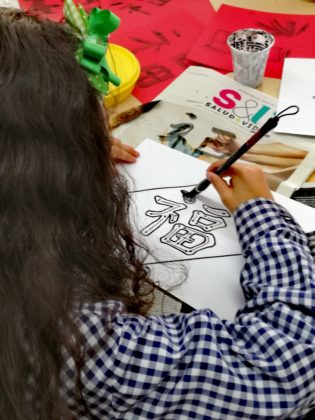The implementation of a multilingual and multicultural approach has played a central role in the agendas of international schools ever since globalisation started filling our classrooms with Third Culture students. Positive opinions on the benefits of intensive language learning as well as the development of intercultural competence are now widespread. Sensitivity towards diversity and competency in speaking several languages not only offers advantages and incentives in the social and professional sphere, but also at a cognitive level. Research confirms that language proficiency not only facilitates social integration but improves academic achievement. In the long run, positive effects of multilingual and multicultural immersion extend to the professional terrain, where certain careers are nowadays restricted to multilingual speakers.
In the context of schools, initiatives in the area of multilingualism and multiculturalism have been traditionally geared towards the creation of a comprehensive immersion system in English, while offering the opportunity to acquire other modern foreign languages. Oftentimes, these initiatives include local languages too, giving students access to the target culture. However, as immersion seeks to pave the way for success in the future, little attention is given to supporting students in their mother tongue(s) and culture(s). The services offered are usually limited to additional differentiated instruction in the target language(s), which eventually becomes the determinant of students’ general skills. Competence in mother tongue and the students’ culture is generally overlooked and activities are restricted to folklore activities showcased on specific occasions.
Given that mother tongue is the vehicle through which one’s culture is learned, it is important to offer students, to the best of our abilities, support and visibility. They feel more welcome and integrate faster when they feel that their language(s) and culture(s) are appreciated and represented. In reciprocation, when these conditions are given, accepting immersion in a new language and culture, and ultimately embracing them, becomes more feasible.
Students’ feelings of personal and cultural identity are affected by cross-cultural mobility and this calls for the creation of a safe environment for personal reaffirmation and inclusion. In order for students to perceive that transition into a new setting as not entirely chaotic, references to home culture and mother tongue, even at a visual level, are very important. A sense of belonging is triggered when multilingual staff serve as interpreters and when appropriate multilingual labelling and visual inputs display the school’s diversity.
Even if attempts at launching comprehensive culturally-enriching mother tongue programs are discouraged by an unendurable list of demands and resources (arising from the very nature of students’ diversity), it is possible to find a way out of the maze and create newcomers’ services that cater for heterogeneous needs. In this vein, European International School of Barcelona (EISB) with its long tradition of hosting international students, understands that progressive inclusion involves developing a sensitivity towards multiculturalism. Diversity on our campus is often approached from a collective perspective where we showcase heritage during celebrations such as Europe Day, Multicultural Fair, Chinese New Year, Francophonie Week, etc. Several of EISB’s services also address the issue from an academic perspective where we give students support in mother tongue and harmonious integration.
Within the Academic Support Centre, students develop their mother tongue within a framework of small-group instruction or private classes. Presently, we have language clubs for speakers of Chinese, Russian, German and French with a flexible setup to ensure that speakers of these languages get an opportunity to continue developing their Cognitive Academic Language Proficiency (CALP) during school days.

The layout of these groups maximizes the opportunities for output in students’ mother tongue while minimizing costs for families. The objective is to strengthen the students’ skills in their first language(s) so that positive transfer occurs for acquisition of the target language(s). Subsequently, this objective prevents weakening at an academic level, the result of which is poor spelling, weak literacy skills, and lack of topic-specific and academic vocabulary, as well as poor idiomatic competence. Simultaneously, our Academic Support Centre engages parents in learning the local languages to thereby encourage integration at a broader level.
Within the Primary and Secondary School department, native speakers of the foreign languages taught at our school are allowed to participate in enrichment programs. Through these highflyers schemes students continue to receive instruction at a native-speaker level, making sure high expectations are maintained. Regarding younger students, qualified teachers run reading recovery programs for those native speakers of English, Spanish or Catalan lagging behind with their literacy skills.
As far as integration is concerned, the International Homeroom - EISB’s initiative for newcomers- offers a nested environment to transition students joining us from different education systems. We impart differentiated instruction in a stage-based system that guarantees language support in the local languages until students progressively reach full immersion. Students are released from the pressure of having to perform in the target language from the very outset through reasonable and respectful benchmarks that we set. Besides helping students to integrate by initially developing their Basic Interpersonal Communication Skills (BICS) in the school’s languages of reference, the International Homeroom also provides support for students at a psycho-emotional level, closely monitoring their social engagement and general academic performance. By spending several periods every week within this multicultural cosmos, students bond and develop intercultural competence, the product of which becomes visible for the rest of the community within the framework of a myriad of activities and projects.

